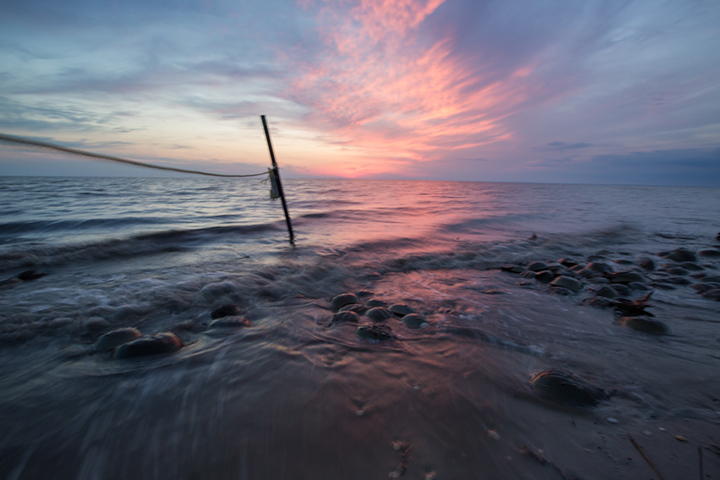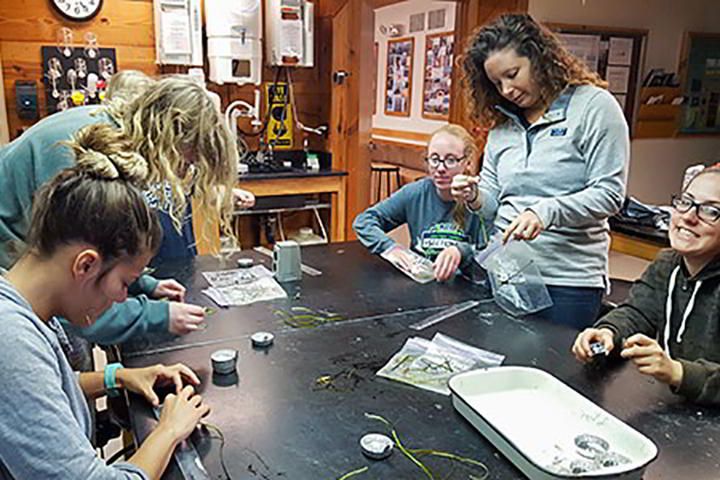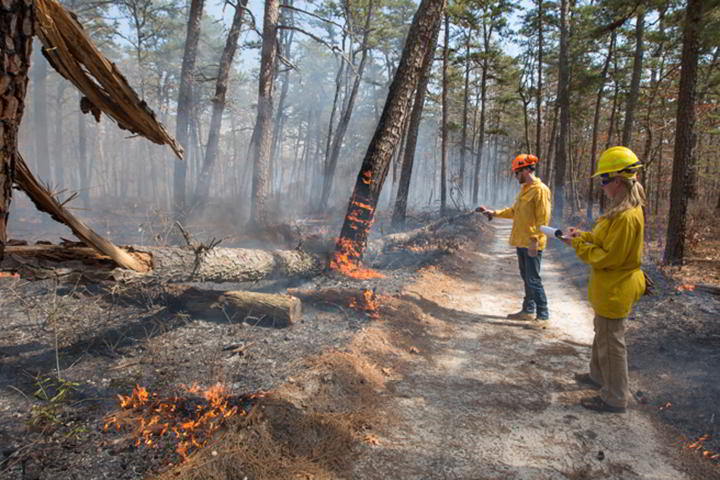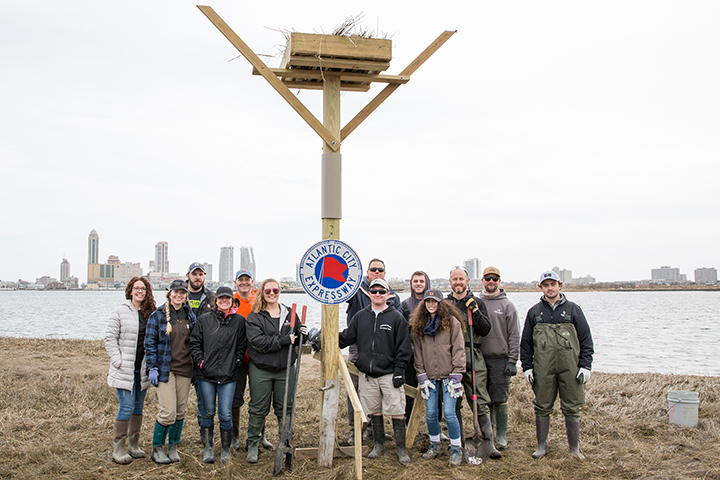Sustainability

Sustainability
As Stockton's Sustainability program continues to grow, so does Stockton's commitment to prepare students to become entrepreneurs and critical thinkers.
Designing a Living Shoreline for Prehistoric and Endangered Species
Migratory shorebirds en route to their Arctic breeding grounds make a pit stop on the Delaware Bay to refuel on eggs laid by spawning horseshoe crabs. From the sea and the sky, these species meet on South Jersey’s sandy bay shores.
After Hurricane Sandy depleted sand from the bay beaches, Stockton University’s Coastal Research Center (CRC) got involved in a series of ongoing habitat restoration projects to help the prehistoric horseshoe crabs and endangered shorebirds.
Red knots and other shorebirds sync their migratory stopover with the horseshoe crab spawn to double their weight on eggs. But birds aren't the only species that depend on horseshoe crabs. They are also in demand by humans for bait and for their blue blood that has a clotting agent used in the biomedical industry to test for bacterial contamination in drugs and prosthetic devices.

Spawning crabs at Kimble's Beach illustrate the success of the habitat restoration project.
Sand replenishment and oyster reef projects are helping to sustain the sand that is critical to the survival of both species.
Sandy stripped the thin sand layer that covers the saltmarsh, exposing organic mass and peat below, explained Steven Hafner, assistant director of the CRC, who coordinates the habitat restoration work with the American Littoral Society, U.S. Fish and Wildlife Service and biologist Larry Niles, of LJ Niles and Associates.
Stockton’s partners and biologists work with volunteers to tag horseshoe crabs and band shorebirds to learn more about their movement, survival rates and behaviors. The CRC will continue long-term monitoring of the beaches’ physical changes to help inform future beach designs that will help two species that depend on sandy beaches for their survival.
The success of a living shoreline is evident this season with horseshoe crabs spawning and flocks of shorebirds feasting on the very beaches that were designed and constructed by the Coastal Research Center.
Learn more about the Delaware Bay habitat and this project by viewing our photo story.
Stockton Creates the Best Nests for Ospreys
On March 29, 2019, Stockton volunteers helped install three new nesting platforms for returning Ospreys right before the 44-mile expressway ends in Atlantic City. This coastal ecosystem is home to ospreys that nest and fish along the marsh from spring into early fall.
In 2018, an osprey pair selected a billboard to raise their young, causing an inconvenience to advertisers. With nesting season underway and no time to secure permits for platform installation in the marsh, the South Jersey Transportation Authority (SJTA) used its informational roadway signage as temporary platforms for wooden nest boxes to provide immediate alternatives.
Daniel Moscovici, associate professor of Environmental Science and Geology, Stockton students, Ben Wurst, habitat program manager for the Conserve Wildlife Foundation of New Jersey and staff from WSP joined SJTA to install the platforms.
University Signs MOU with Ørsted U.S. Offshore Wind
Stockton University signed a Memorandum of Understanding with Ørsted U.S. Offshore Wind that will support research, academic programs and events at Stockton.
The agreement could also provide Stockton students and faculty with opportunities to assist with the development of Ørsted proposed Ocean Wind project, should that project receive state approval. Ørsted has submitted an application to the New Jersey Board of Public Utilities to develop an offshore wind farm 15 miles from the coast of Atlantic City.
Forest Goes Up in Flames for a Good Cause
Stockton University students studying forestry with George Zimmermann, professor of Environmental Studies, had a warm spring break on the Galloway campus during a controlled burn March 14, 2019.
Returning fire to the forest ecosystem is part of Stockton's 10-year Forest Management Plan that was written by Bob Williams of Pine Creek Forestry. Students got the opportunity to shadow New Jersey Forest Fire crew members during the burns to collect data that will describe the impact of fire on a Pinelands ecosystem.
Take a walk on an interpretive trail and explore the website to learn more about how Stockton is managing its forest for a healthy and biodiverse future.
Stockton Receives Grants for Barnegat Bay Projects
During the spring, the New Jersey Department of Environmental Protection (NJDEP) awarded Stockton University two grants totaling $525,000 to continue restoration efforts in the Barnegat Bay estuary, the largest coastal bay in New Jersey.
Since 2012, Stockton has been working to improve the ecological health of the bay by focusing on oyster restoration and SAV – submerged aquatic vegetation and seagrass – through grants funded by the Barnegat Bay Partnership.
The project, “Barnegat Bay Oyster Reefs: Scaling a Successful Pilot Project to Achieve Water Quality Improvement,” led by Christine Thompson, assistant professor of Marine Science, received $300,000.
The second project, “SAV Habitat Suitability Modeling and Restoration to Improve Ecological Health and Reduce Turbidity in Southern Barnegat Bay,” led by Elizabeth Lacey, associate professor of Marine Science, received $225,000.

Students gain hands-on experience on scientific projects on the Barnegat Bay, constructing oyster habitats in areas with suffering vegetation to assist growth.

Stockton's Forest Management Plan includes bringing fire to the ecosystem to maintain its health and prevent wildfires.

Stockton faculty and students joined SJTA, WSP engineers and the Conserve Wildlife Foundation of New Jersey to install platforms for osprey nests along the Atlantic City Expressway.



